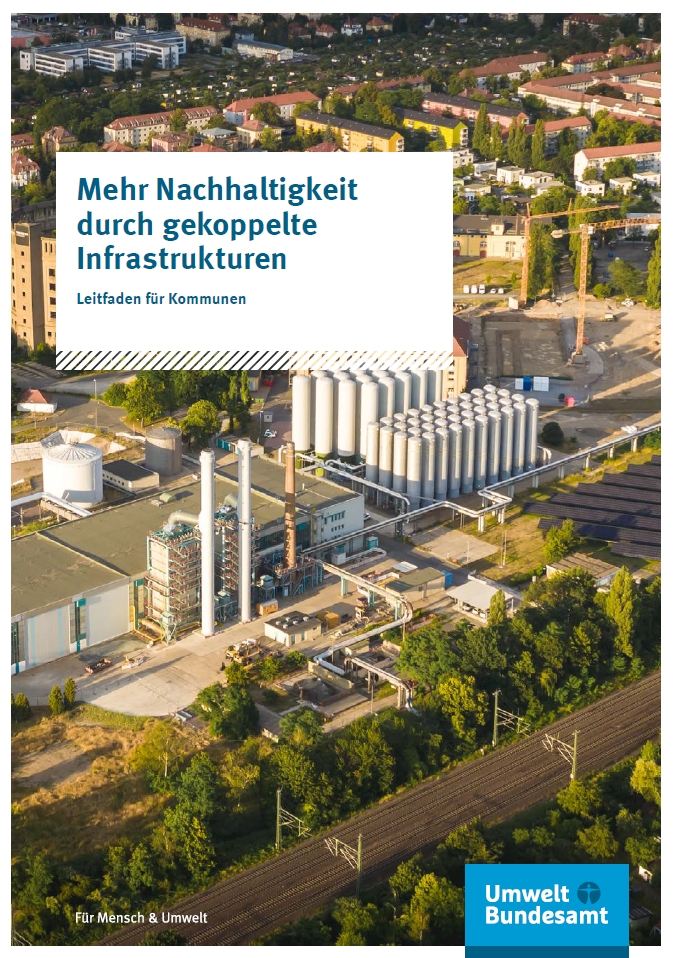Mehr Nachhaltigkeit durch gekoppelte Infrastrukturen
Leitfaden für Kommunen
- Publication
- Citation
Olfert, Alfred et al. 2021: Mehr Nachhaltigkeit durch gekoppelte Infrastrukturen. Leifaden für Kommunen. Umweltbundesamt: Dessau-Roßlau.
The guideline "More sustainability through coupled infrastructures" presents a comprehensive approach on how municipalities can make their infrastructure systems more sustainable through innovative sector coupling. It emphasizes the role of new technical possibilities and the need for a systemic perspective in order to fully exploit the potential of infrastructures and focus on long-term sustainability.
Innovative solutions through sector coupling
The guide discusses how sector coupling, in which different infrastructure sectors such as energy, water, waste and ICT are networked, can lead to a more efficient use of resources. For example, the heat from wastewater can be used to generate energy or energy generation and distribution can be optimized through intelligent network solutions. These approaches not only increase energy efficiency, but also help to reduce greenhouse gas emissions.
Challenges and opportunities of coupled infrastructures
While coupled infrastructures offer significant environmental and economic benefits, they also present new challenges, particularly in terms of system complexity and susceptibility to failure. The guide discusses how these challenges can be overcome through comprehensive planning, user involvement and adaptation of technical and organizational structures. It also highlights the need to promote public acceptance and involve local stakeholders in the transformation process.
Municipal policy measures to promote sustainable infrastructures
Finally, concrete measures are proposed for local policy to actively support the development and implementation of coupled infrastructure solutions. These include the promotion of innovation spaces, the creation of legal and financial incentives and support through knowledge exchange and training. The guideline emphasizes that a proactive role for local politics is crucial in order to successfully set the course for sustainable infrastructures.



